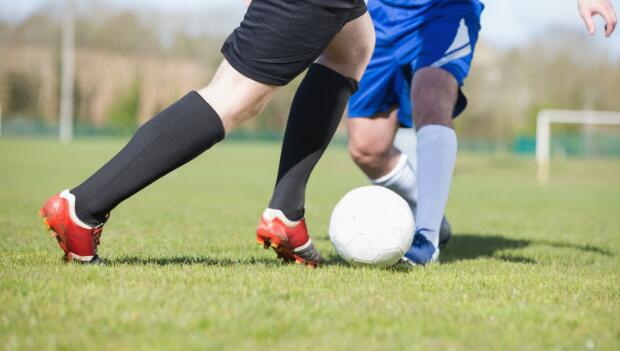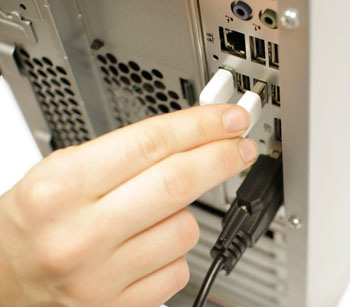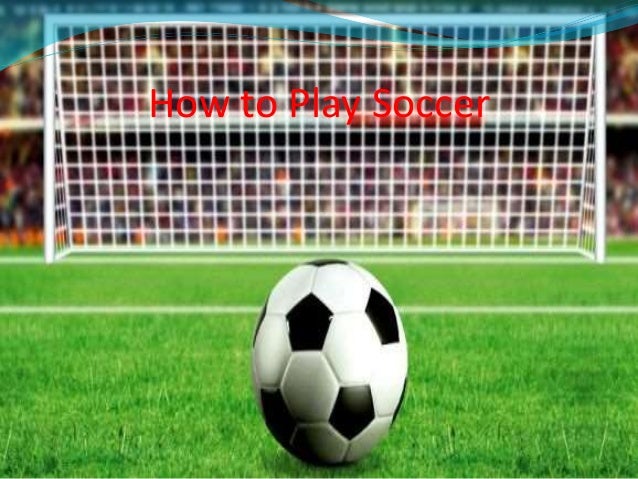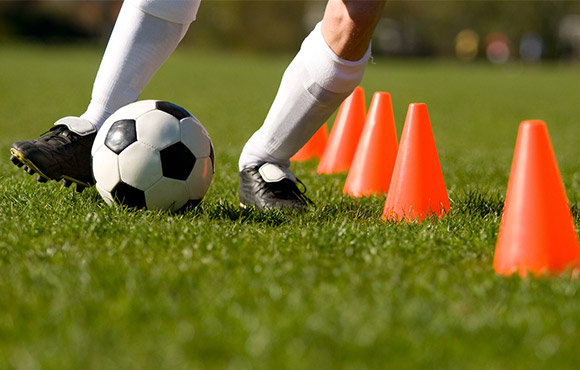HOW TO PLAY FOOTBALL
Soccer, also known as football or fútbol everywhere besides the United States of America, Canada and Australia, is a fun, competitive game. It is the most-played sport in the world, with over 200 million players in about 200 countries. Now, it is referred to as "the beautiful game" because of its dazzling degrees of technical skill, team play, and individual contribution. If you're serious about playing soccer, know that you're going to have to train harder, longer, and faster than your opponents, and always have a ball on hand. (Maybe you'll sleep with a ball instead of a pillow.) So what are you waiting for? Read this article and you will learn how to play this wonderful sport.
1
Learn how to dribble. Dribbling is controlling the ball while running. If you want to keep the ball in your team's possession, you're going to need to dribble well. Dribbling is all about touching the ball strong enough to carry it forward, but light enough so that it stays by your side — and away from opponents.

2
Learn how to pass. Passing is all about putting the ball exactly where you want it. In order to pass a soccer ball, kick the ball using the inside of your foot. This will give you less power but more accuracy. Once you master the basic pass, you can then try to slice and hook the ball in order to pass it to one of your teammates.
- Pay attention to where your planter foot is placed. Your planter foot should be right next to the ball. While the planter foot is near the ball, point the foot in the direction you would like the ball to go to.
- Pass with your toes pointed upward and your heel on the ground.
- Anticipate where a player is going to be. Because you're often going to be passing on the fly, kicking the ball to an open space where you want your teammate to be is essential. If your teammate is running, always kick the ball ahead of them so that they can run to the ball.

3
Know how to shoot. If you're really close to the goal and all you need is accuracy, you can shoot using the sweet spot of the inside of your shoe, like a pass, but usually, you're going to be farther away and will need power as well as accuracy,of course.
- Set your planter foot and aim the toe of the planter foot to where you want the shot to travel and always have a slight look at the target before you shoot.
- You don't have to get much of a running start, but you do want to bring your foot back, bending it as you do in order to get more power.
- Hit the ball on the middle laces of your shoe, with your foot pointed down at the ground. Keep your foot pointed down at the ground as you follow through.
- Use your hips to swing through the ball. Bring your foot across your body if necessary to generate even more power. This should cause both feet to lift from the ground.

4
Think about moving off the ball. Some estimates say that professional soccer players run 6 to 8 miles (9.7 to 12.9 km) during a 90 minute game.
[1] That's a lot of running. It doesn't take a rocket scientist to figure out that a lot of the running you'll be doing is when you
don't have the ball. Learn how to get into open space, how to run to where to your teammate expects or wants you to be, and how to run past a defender who's guarding you.

5
Learn how to defend. Defending the goal is an underrated achievement. It can be extremely difficult staying on your man or getting the ball away from your man. There are three basic things that you need to remember when guarding a player in soccer:
- Don't be fooled by feints, tricks, or jukes: keep your eye on the ball. A good soccer player will try to juke or feint with their body in order to get past you. They're hoping that what they do with their body will distract you from what they're going to do with the ball. Don't let this happen. Keep your eyes on the ball at all times, not on the player.
- Stay in between the ball and the goal. In other words, don't let the ball get behind you. This is harder than it sounds. It's a delicate balance keeping enough pressure on the ball and giving the person who's attacking enough space so that they don't get behind you.
- Learn to anticipate the dribble. Right after an attacker hits the ball on the dribble — that's the time when try to hit the ball away. This is called anticipating the dribble, and it's essential for knocking the ball from an attacking player. Just be sure not to lunge and miss; you're vulnerable when you do this!

6
Get comfortable heading the ball. Try hitting the ball with your head right where your hair meets your forehead. Do not use the top of your head! When getting ready to head the ball, don't lift your head back; move your upper torso back instead. This will give you more power and won't strain your neck as much. You have to hit the ball, not let the ball hit you.

7
Learn how to juggle. Juggling is very hard to master but an important part of the game. Truth be told, you won't need to juggle very often in a game, but knowing how to juggle does several things:
- It helps you control a ball that's coming at you from the air. Not all passes are on the ground. The ones that aren't will need to be intercepted and controlled by some form of juggling.
- Juggling helps improve your touch on the ball. If you know how to juggle your touch on the ball becomes a lot more sensitive. Your first touch on the ball is extremely important in soccer.
- Juggling will help you use both feet better. Learning how to juggle is an exercise is using your non-dominant foot better. The best soccer players in the world can use both feet as dominant feet.

8
Learn how to use your non-dominant foot. It's really important to be able to dribble, pass, and shoot the ball with your non-dominant foot. Good defenders will take away your dominant foot and force you to play with your non-dominant foot. If you can't use your non-dominant foot, you'll be playing with a handicap.
- Practice only using your non-dominant foot during practice or when you shoot or juggle by yourself. Accustoming your body to the muscle memory is an important part of being fluent in your non-dominant foot.
10
Be original and spontaneous with your playing style. Try to develop your own playing style, one that suits you. Are you a tricky player who relies on joking out other players? Are you fast enough to beat everyone with sheer speed? Are you great at using your body and power to blast goals? Are you expert at keeping opponents from getting off shots? Find out what kind of player you are, set goals for yourself on how you can become a more rounded player, and remember to have fun. Soccer isn't the most popular sport in the world for no reason.
courtesy:https://www.wikihow.com/Play-Soccer




















